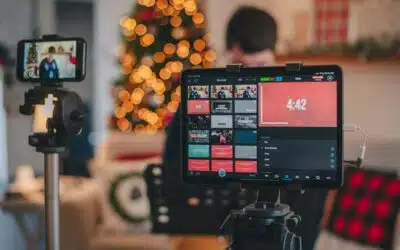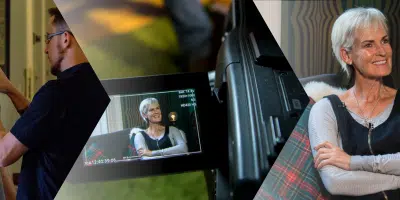Live streaming has become one of the most popular ways for individuals and businesses to connect with their audience. From gaming to fitness, education and brand activations, live streaming has revolutionised the way we consume content. However, an important aspect of producing high-quality live streams is often not given as much consideration as it deserves. In this blog, we’ll explore why lighting is incredibly important in live stream production and how to get it right.
What is a live stream?
A live stream is a broadcast in real-time over the internet, enabling viewers to interact with the host or creators in real-time. This type of content is highly engaging and has exploded in popularity in recent years due to its interactive nature. However, producing high-quality live streams requires a lot of attention to detail, and lighting is one aspect that is crucial to ensure high production values are met.
Video Temperature Settings
When it comes to lighting for live streaming, one of the most important factors to consider is the video temperature settings. Video temperature refers to the colour temperature of the light. The temperature scale ranges from warm to cool and is measured in Kelvin. The warmer end of the scale is around 2700K, while the cooler end is around 5000K.
When choosing your video temperature, it’s important to consider the atmosphere and mood of your content. If you’re filming a fitness class or tutorial, you may want to use a cooler temperature to create a bright and vibrant environment. On the other hand, if you’re streaming a relaxing meditation session, a warmer temperature can help create a relaxing and calming atmosphere. Check out this project we filmed with the Lumineers where we used warmer lighting inside Union Chapel: https://www.facebook.com/TheLumineers/videos/2324126994508920/
Light Intensity for your Live Stream
Another crucial aspect of lighting in live stream production is the intensity of the light. Light intensity refers to the brightness of the light, and it’s important to choose the right level of intensity for your content. If your lighting is too bright, it can cause overexposure and make the footage look washed out. On the flip side, if the lighting is too dim, it can make it difficult for viewers to see what’s happening.
Adjust the Angle of the Light in your Video
The angle of your light is also critical in live stream production. The angle of the light can affect the shadows and create depth in your footage. When setting up your lighting, it’s essential to consider the direction of the light and the shadows it will create.
For example, if you’re filming a makeup tutorial, you may want to set up your lighting at an angle that will create shadows around the face. This can help create a more defined look and highlight the contouring of the face.
Position your Light Source for your Live Stream
Positioning your lighting is also important when it comes to lighting for live streaming. The position of your light source can affect the overall look and feel of your content. If you’re filming a seated tutorial or discussion, it’s essential to position your lighting at a 45-degree angle in front of the subject. This can help create a natural and even illumination of the face.
Use Reflectors when you go Live
Reflectors are another useful tool in live streaming productions. Reflectors are used to reflect light onto the subject and create a more even and consistent lighting environment. Reflectors come in different shapes and sizes and can be used to create different effects.
For example, if you’re filming a product review, you may want to use a reflector to create a soft and even light on the product. This can help highlight the product’s features and make it more visually appealing to viewers.
Use Backlight to go Live like a Pro Streamer
Backlighting is another technique used by streamers to create a professional and polished look in their live streams. Backlight is created by placing a light source behind the subject, creating a halo effect around the subject.
Using backlight can create depth in your footage and make your subject stand out from the background. It’s a useful technique for adding visual interest and creating a professional look in your live streams.
However, it’s important to use backlight carefully, as too much backlight can cause overexposure and make the footage look washed out. It’s essential to find the right balance of lighting to create a polished look without sacrificing the quality of the footage.
Lighting considerations for people of colour
When it comes to lighting for live streaming, it’s essential to consider people of colour . The lighting setup can significantly affect the way people of colour appear on camera, and it’s important to get it right to ensure that everyone is represented accurately and fairly. Lighting that is too bright can cause overexposure, which can make the skin appear washed out and lighter than it actually is. On the other hand, lighting that is too dim can make it difficult to see the features of people of colour. In certain lighting conditions skin can appear darker so using warmer temperatures can help balance this out. Setting up the correct lighting for people of colour is crucial to ensure that everyone is represented accurately on camera. This is important not only for representation but also for creating an inclusive environment for all viewers.
Lighting is a very important aspect of live stream production. It can make or break the success of your live stream and affect the overall look and feel of your content. When it comes to lighting for live streaming, it’s essential to consider the video temperature settings, light intensity, angle of the light, position of the light source, and the use of reflectors and backlight. By paying attention to these factors and using the right lighting techniques, you can create professional-looking live streams that engage and captivate your audience. Groovy Gecko offers full end to end production including lighting packages. You can learn more about our production services here



